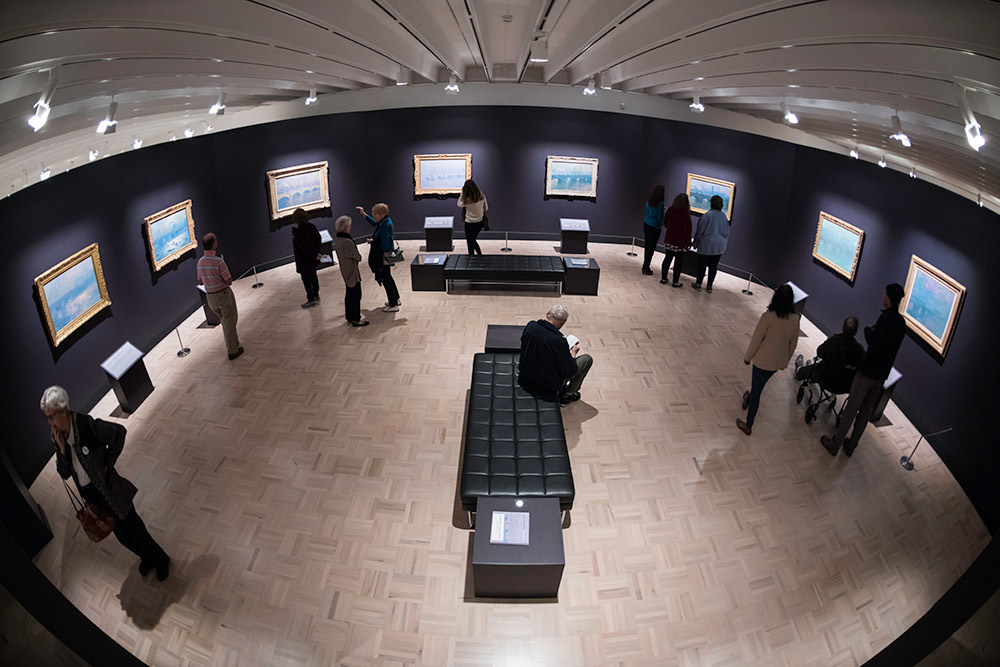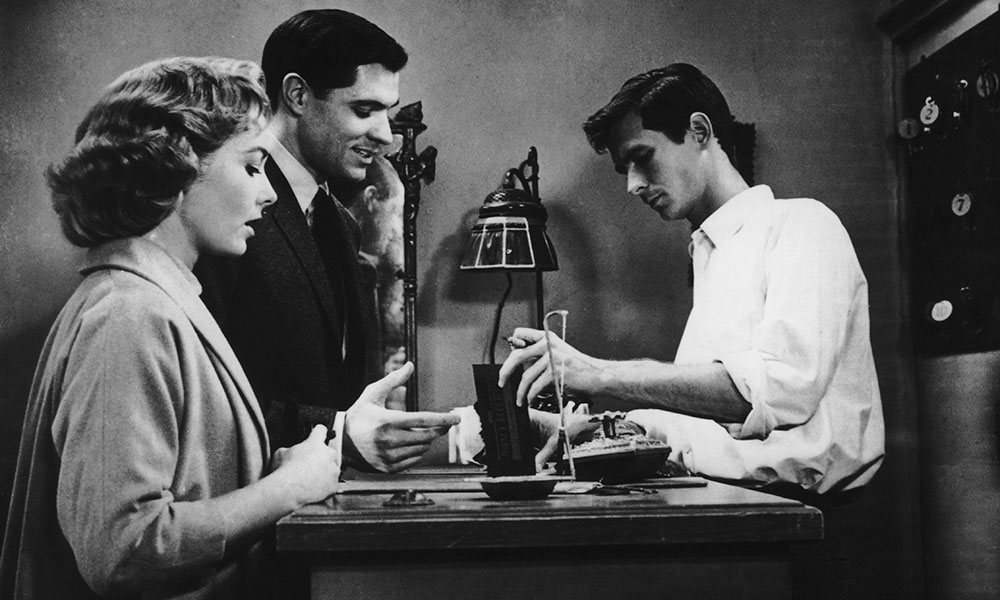The Memorial Art Gallery’s focus exhibition of Claude Monet’s “Waterloo Bridge” series offers a rare, side-by-side look at the artist’s attempts to capture the foggy landscape of London’s Thames River.
Monet’s Waterloo Bridge: Vision and Process includes eight versions of the same scene captured from his balcony at the luxurious Savoy Hotel.
Monet at the Mag
The exhibit runs October 7, 2018–January 6, 2019. Special pricing is in effect for this exhibit; admission is $5 for University students, faculty and staff with current ID.
Visit MAG’s website for details on companion exhibits, lectures and more.
“Exhibiting together so many outstanding examples of one of Monet’s great late series would be a coup for any museum, [and] we are especially pleased to do this in Rochester, where we steward one of the best examples of the ‘Waterloo Bridge’ series,” says MAG Director Jonathan Binstock, referring to Waterloo Bridge, Veiled Sun. “This is a once-in-a-lifetime opportunity to experience firsthand the quintessence of Monet’s contribution to this history of art.”
The exhibition includes MAG’s painting and seven others on loan from North American sister institutions, including museums in Chicago, Denver, and Washington, D.C.
An ancillary show draws from works in MAG’s own collection to provide a deeper context for the Waterloo Bridge paintings, showcasing two earlier paintings by Monet as well as works by Paul Cézanne, Pierre-Auguste Renoir, Edgar Degas, James McNeill Abbott Whistler, and others.
Although Monet once said the fog in London gives the city “its magnificent breadth,” the artist became frustrated with his attempts to capture the atmosphere just right. After taking on the same subject again and again, from the same point of view, he brought his paintings back to his studio in Giverny, France, to work on them some more. He refused to send any to his dealer until he was satisfied with them all, both individually and as an ensemble.
“We’re trying to get a sense of his working process with this exhibit, to understand his vision and the means by which he achieved that vision—or didn’t,” says Nancy Norwood, the museum’s curator of European art.

New technologies and video were developed specifically for the exhibition, the result of a 2016 collaboration with Buffalo State College’s art conservation program. Scientists there conducted an extensive new imaging and materials analysis on Waterloo Bridge, Veiled Sun, showing the changes Monet made to the work as well as the exact pigments he used in his efforts to capture the effects of water, light, fog, and smoke.
State-of-the-art interactive touchscreens created as a result of that analysis allow visitors to look beneath the surface of the painting and more deeply into Monet’s process.
A companion exhibition, Seeing in Color and Black-and-White, offers yet another way to discover how color is used to create form, suggest space, and imply motion.
Showcasing 17 paper prints and three mixed-media sculptures from abstract artists such as Josef Albers, Victor Vasarely, Jesus Rafael Soto, and Edna Andrade, these are works from the museum’s permanent collection but displayed infrequently because of light sensitivity.
During the spring of 2018, students in the course The 21st Century Art Museum, taught by Andrew Cappetta, the assistant curator of academic programs at MAG, researched and developed thematic elements for Seeing in Color and Black-and-White, and created drafts of wall texts and catalogue entries for each work of art.
Cappetta says they wanted viewers to take what they learn about human visual perception from this exhibit and apply it to Monet’s paintings.
That’s easier to do here than with most shows.
Unlike a retrospective, a focus exhibition invites an in-depth look at a small number of works, rather than a superficial view of a large number of works.
“It’s a luxury,” says Norwood, adding that getting permission to borrow the “Waterloo Bridge” paintings was a process in itself. “These are very important pictures, and nobody wants to give them up.”
—Robin L. Flanigan



